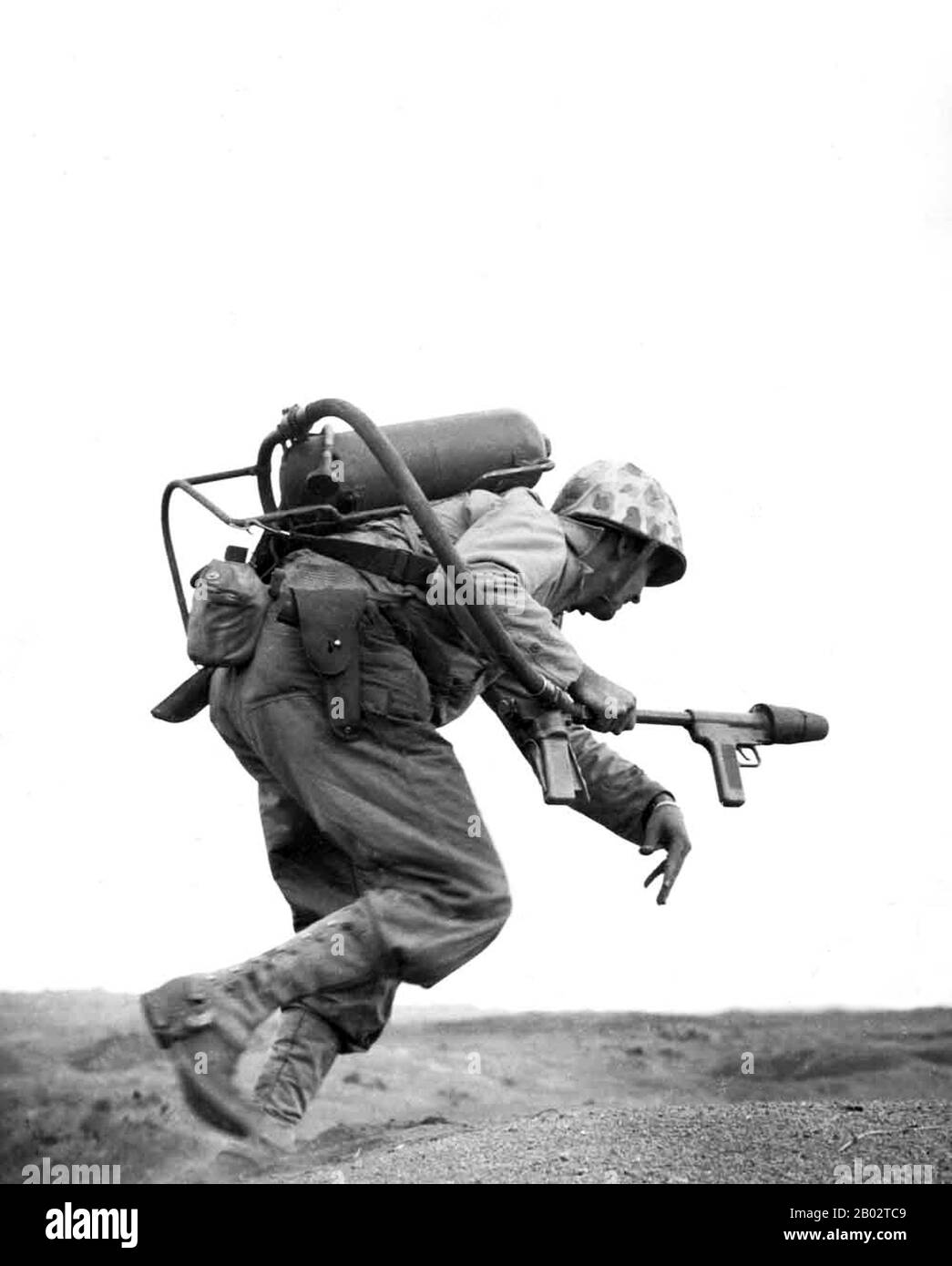The invasion of Iwo Jima began on February 19, 1945, and continued to March 27, 1945. The battle was a major initiative of the Pacific Campaign of World War II. The Marine invasion was charged with the mission of capturing the airfields on the island, which up until that time had harried U.S. bombing missions to Tokyo. Once the bases were secured, they could then be of use in the impending invasion of the Japanese mainland. The battle was marked by some of the fiercest fighting of the War. The Imperial Japanese Army positions on the island were heavily fortified, with vast bunkers, hidden art

Image details
Contributor:
CPA Media Pte Ltd / Alamy Stock PhotoImage ID:
2B02TC9File size:
51.4 MB (543.8 KB Compressed download)Releases:
Model - no | Property - noDo I need a release?Dimensions:
3800 x 4727 px | 32.2 x 40 cm | 12.7 x 15.8 inches | 300dpiDate taken:
11 June 2008Photographer:
Pictures From HistoryMore information:
This image could have imperfections as it’s either historical or reportage.
The invasion of Iwo Jima began on February 19, 1945, and continued to March 27, 1945. The battle was a major initiative of the Pacific Campaign of World War II. The Marine invasion was charged with the mission of capturing the airfields on the island, which up until that time had harried U.S. bombing missions to Tokyo. Once the bases were secured, they could then be of use in the impending invasion of the Japanese mainland. The battle was marked by some of the fiercest fighting of the War. The Imperial Japanese Army positions on the island were heavily fortified, with vast bunkers, hidden artillery, and 18 kilometres of tunnels.The battle was the first U.S. attack on the Japanese Home Islands and the Imperial soldiers defended their positions tenaciously. Of the 21, 000 Japanese soldiers present at the beginning of the battle, over 19, 000 were killed and only 1, 083 taken prisoner.